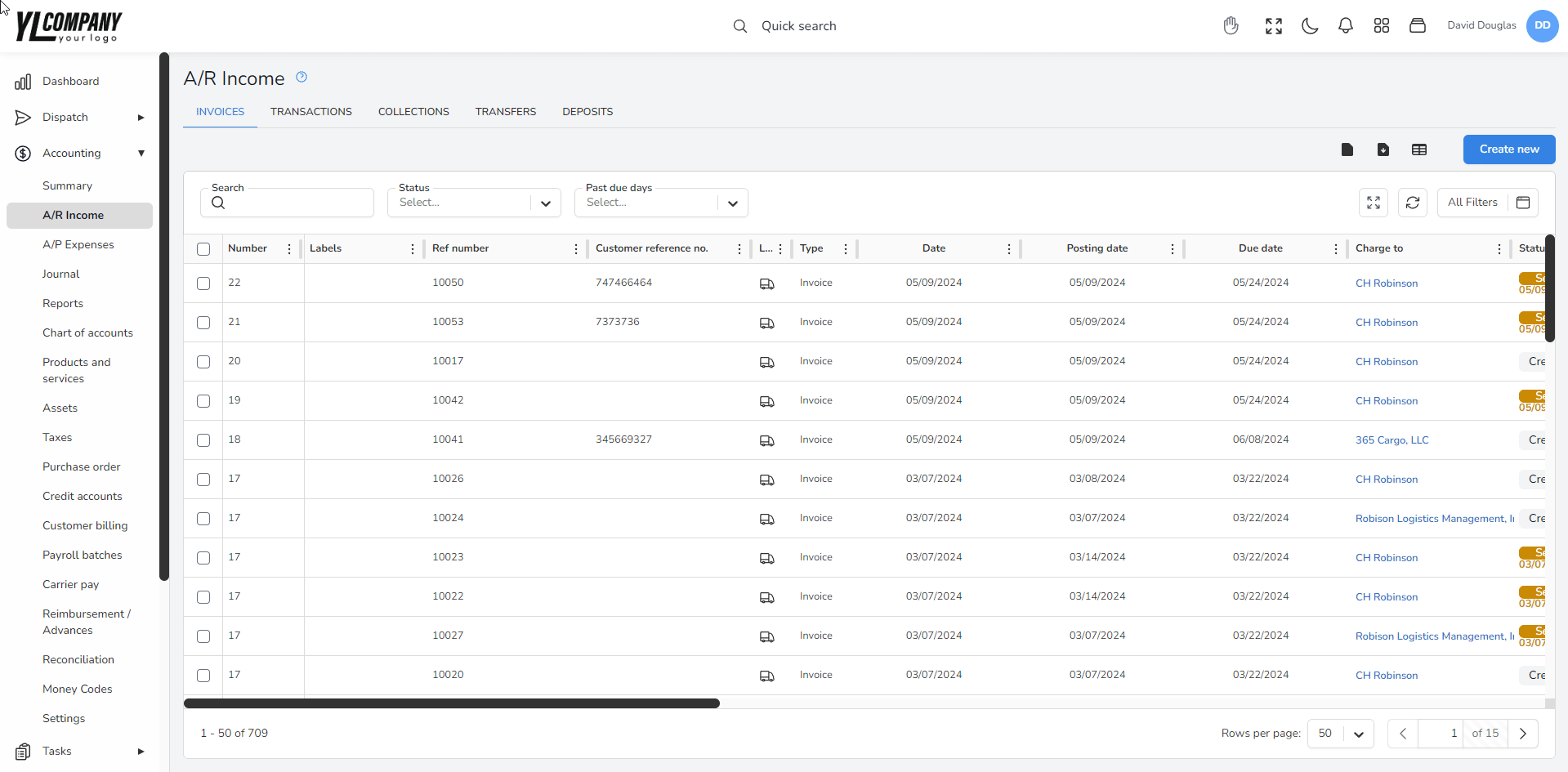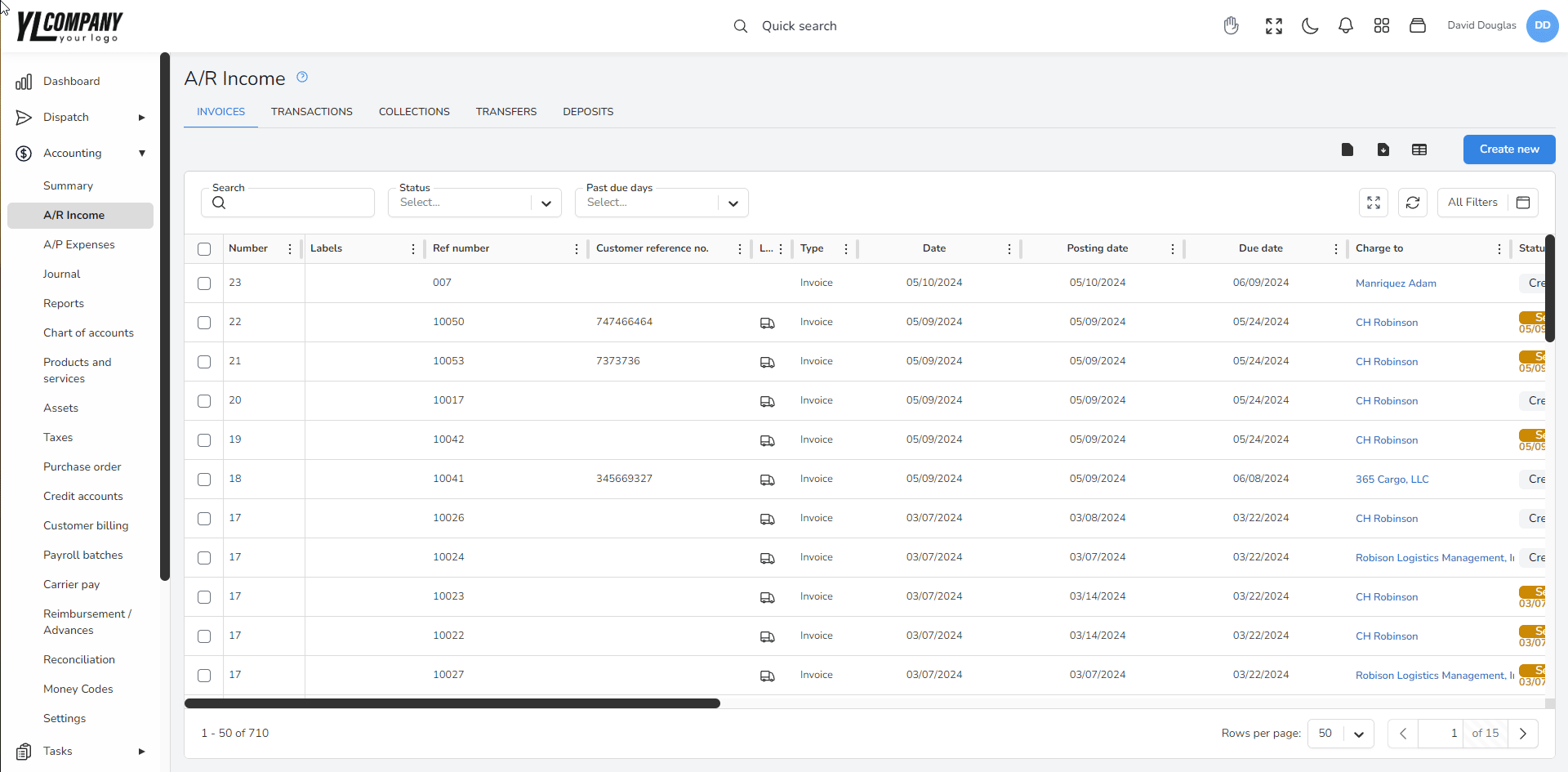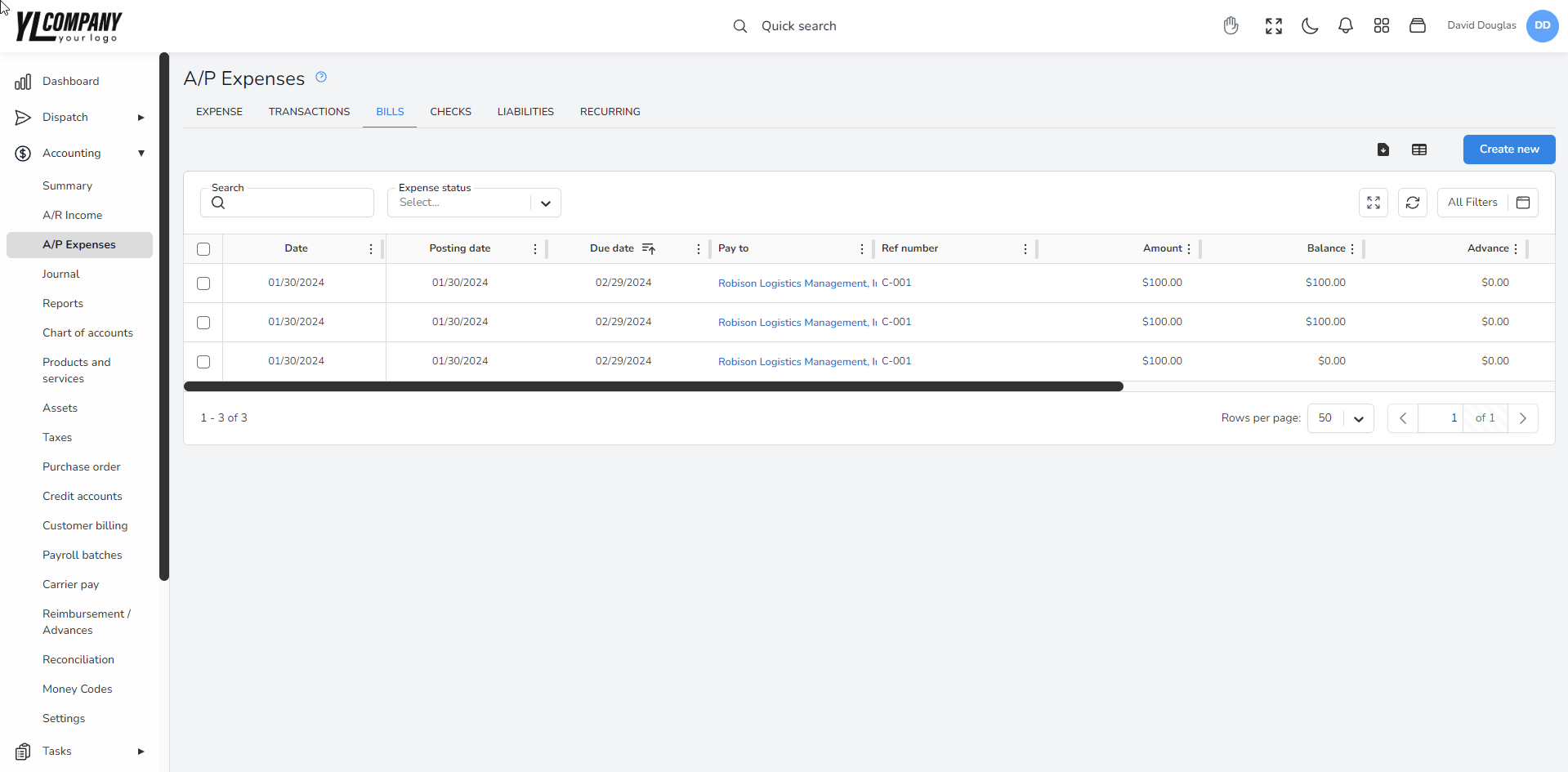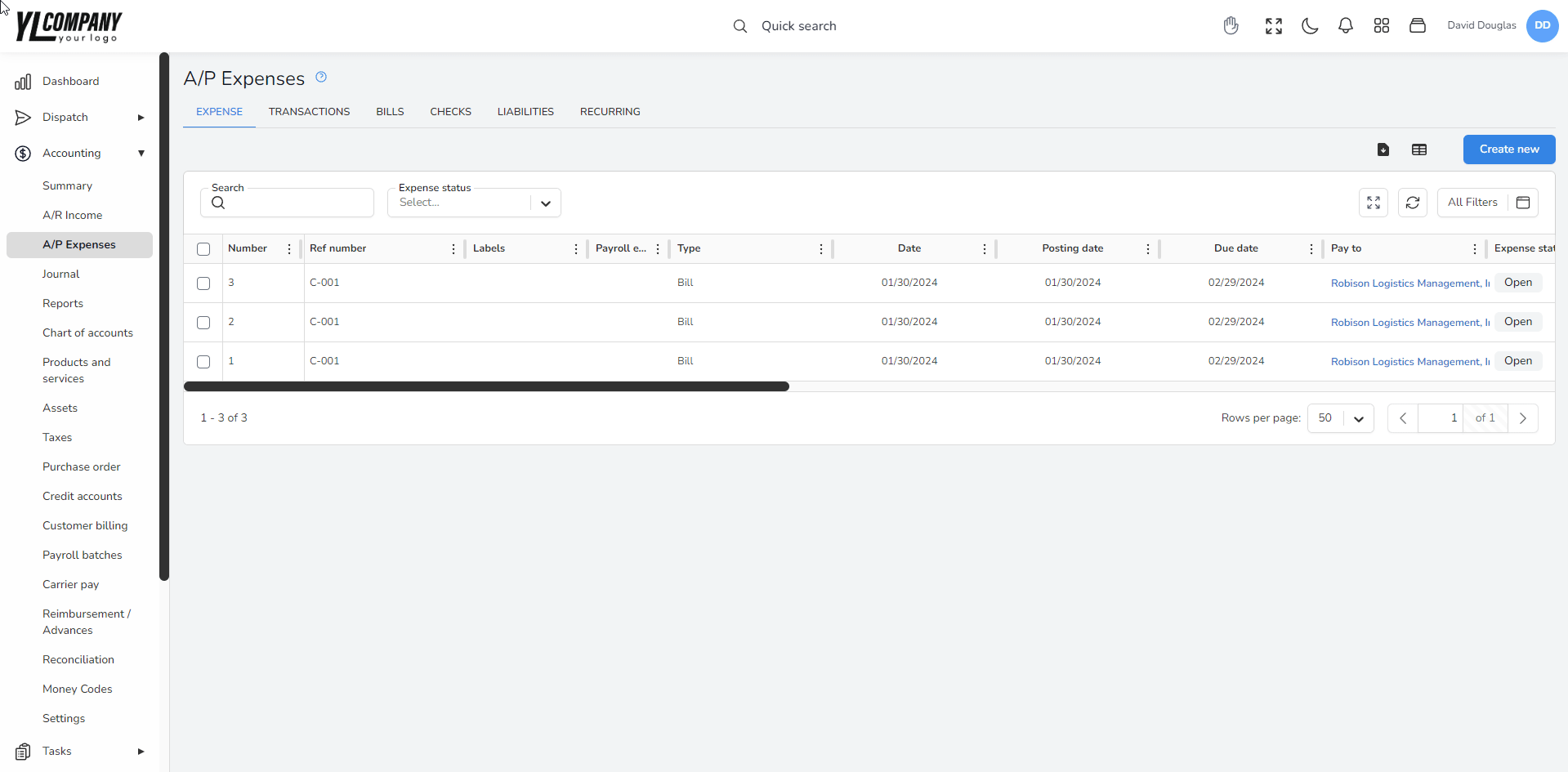Help center
How can we help you?
Financial Transactions in Accur8 TMS: Understanding A/R and A/P
In Accur8 TMS, effectively managing your company’s finances involves distinguishing between Accounts Receivable (A/R) income and Accounts Payable (A/P) expenses. This distinction is crucial for accurate financial reporting and cash flow management. Here’s a breakdown of how invoices, receipts, bills, and expenses fit into these categories.
Accounts Receivable (A/R) Income
Invoices
Invoices fall under Accounts Receivable. They represent a formal request for payment from your customers for services rendered or goods delivered but not yet paid for. Creating an invoice in Accur8 TMS indicates that you are awaiting payment, marking an expected income in your financial records.
Accounts Payable (A/P) Expenses
Bills
Bills are considered part of Accounts Payable. They represent obligations your company needs to fulfill in the future for expenses incurred. If you have received a service or product but plan to pay for it later, you should enter it as a bill in Accur8 TMS. This helps manage cash flow by tracking upcoming outflows.
Expenses
Expenses are also A/P transactions but are recorded after payment has been made for a business-related cost. Entering an expense in Accur8 TMS means you’ve already paid for a service or product related to the operation of your business, such as fuel for a company vehicle or office supplies. This distinction is important for budgeting and tax purposes.
When to Enter as Bill or Expense
- Already Paid: If a business expense has already been paid, it should be entered into Accur8 TMS as an expense. This directly affects your financial statements by reducing your cash and increasing your expense accounts.
- Future Payment: If you have incurred a cost but plan to pay for it in the future, enter it as a bill. This acknowledges the liability on your books and helps you keep track of what is owed, aiding in cash flow management.
Understanding the difference between A/R and A/P, and when to use invoices, receipts, bills, and expenses, is fundamental for accurate financial tracking and management in Accur8 TMS. This clarity ensures your business operations are both efficient and financially sound.
Need Help?
For assistance with financial transactions:
- Contact Accur8 Support: Reach out to our expert support team at (872) 710-1170 or
- Send an Email to support@accur8.services for personalized assistance.




